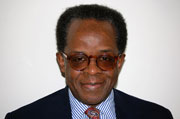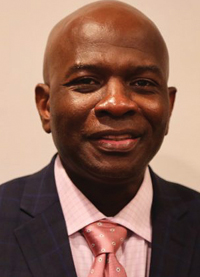
The white majority’s racial world of fantasy
By Lee A. Daniels NNPA Columnist
Now, in the season that’s supposed to exalt goodwill toward all, comes fresh evidence of the important role the white majority’s unwillingness to consider Black Americans as their counterparts across the color line plays in maintaining the racial divide.
Note that I said the white majority, not all whites. Indeed, at each stage of Blacks’ difficult journey through and out of the eras of slavery and its first cousin, Jim Crow, the alliance between Blacks and the minority of whites who’ve opted to support racial justice has been critical to the progress Blacks charted.
The current dense fog of racial controversy enveloping American society shouldn’t blind us to the fact that that dynamic still works: For one thing, it’s precisely because a sizable minority of white voters joined with the heavy majorities of Black, Hispanic- and Asian-American voters that Barack Obama was elected and re-elected to the presidency. (And the protests against the grand jury decisions in the police killings of Michael Brown and Eric Garner continue to include significant numbers of white and other Americans of color.)
But the Obama breakthrough has also led many of the nation’s diminishing White majority to cling ever more tightly to both obvious and disguised White-supremacist notions of its racial world of fantasy, to blind themselves to reality.
Of course, the grand jury decisions in the police killings of 18-year-old Michael Brown, in Ferguson, Mo., and 43-year-old Eric Garner, in New York City, have exposed anew the race-driven gap between Blacks and Whites. An early-December poll conducted by the Pew Research Center and USAToday found, as it put it, “Sharp racial divisions in reactions to Brown, Garner decisions.”
The survey determined that 64 percent of Whites believe the decision not to charge Ferguson police officer Darren Wilson for killing Michael Brown was correct, compared to 23 percent of Whites who said it was wrong. In contrast, 80 percent of Blacks said the grand jury decision not to charge Wilson was wrong; only 10 percent said it was correct.
In the Garner case, the Pew/USAToday document found a lower degree of racial difference, and yet, even that difference has an element worth noting. While 47 percent of Whites and 90 percent of Blacks agreed that the grand jury decision was wrong (28 percent of Whites and just 2 percent of Blacks thought it was correct), fully 25 percent of Whites declined to express an opinion about the decision (compared to 2 percent of Blacks).
The survey’s authors didn’t speculate why such a high percentage of Whites would choose the “don’t know” category. But here’s my take: most of those “White don’t knows” didn’t want to declare the obvious: that the grand jury should have indicted a White cop for killing a Black man.
Yes, I’m suggesting that the lure of White racial solidarity not only played a significant role in producing the high percentage of “White don’t knows” on that one question in that one poll but also plays a significant role in both the general operation of the criminal justice system and street-level policing, and in the wide gaps between black and white attitudes on those issues.
The current “testimony” on Twitter of Whites, via #crimingwhilewhite, who say they were not arrested or treated leniently under arrest after committing misdemeanors or even minor nonviolent crimes should be read as a companion to the numerous scholarly studies showing that alleged Black and Hispanic wrongdoers are often treated more harshly than White ones by police, prosecutors, juries and judges.
A Dec. 9 New York Times column on the Dec. 5 arrest of two graduates students from the Union Theological Seminary during the protests in New York over the Garner grand jury decision brings that “racial divide” down to street level. The two students, Shawn Torres, who is Black, and Benjamin Perry, who is White, had planned to get arrested as part of a group blockading part of one of the city’s major highways. They were.
But, as they told the Times columnist, Jim Dwyer, while Torres was being handcuffed with the police plastic ties, an officer grabbed Perry, “threw me face first to the ground. He put his head next to my ear and whispered, ‘Just get out of here.’”
Thus began the bizarre effort of Benjamin Perry to get treated by the police at street level and at the precinct as equally negatively as his Black friend and colleague.
Dwyer, the Times columnist, concludes his article by posing the question, “Was it possible that the differences in their treatment stemmed not from their races but from the disposition of the officers who arrested them? He lets Shawn Torres have the last word: “No. Black and White bodies are not treated equally.”




Be the first to comment